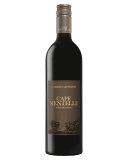LA DAME DE MONTROSE Second Wine of Chateau Montrose
La Dame de Montrose, first vintage 1983, is the highly-regarded second wine of Chateau Montrose, the St. Estephe deuxième cru (second growth). Montrose has a little more than 90ha of vines, the entire site overlooking the Gironde. The vineyard is 60% Cabernet Sauvignon, 32% Merlot, 6% Cabernet Franc and 2% Petit Verdot. Around 50% (or less) of the crop goes to make the grand vin and around 30% (or more) goes into La Dame de Montrose. (The rest is used elsewhere or sold in bulk.) In good years La Dame de Montrose is considered a bargain, in the best years it stands alone as a great wine. The Dame de Montrose herself is the late Yvonne Charmolüe, who ran the estate from 1944 to 1960.
LA CHAPELLE DE LA MISSION HAUT-BRION Second Wine of Chateau La Mission Haut-Brion
This is the second wine of La Mission Haut-Brion. About 4000 cases are produced each year.
Domaine A Cabernet Sauvignon, Coal River Valley Tasmania
Domaine A Cabernet Sauvignon, which also includes a small percentage of Merlot, Cabernet Franc and Petit Verdot is a foil to the more opulent mainland styles. Violets, roses and blackcurrants pervade through the wine like an English country garden. The tannins are especially fine grained and there is a beautiful freshness and mineral quality on the palate. The parcels of fruit are batch vinified in stainless steel tanks before maturation in 100% new oak for between two and three years.
Arras Grand Vintage
House of Arras Grand Vintage is at the pinnacle of Australian sparkling wine! The fruit is sourced from the cool climate region of Tasmania where Ed Carr (Gourmet Wine Traveller Winemaker of the Year 2011) and his team produce an outstanding wine of incredible complexity and character resulting from extended maturation on yeast lees.
Chateau Rauzan-Segla 2me cru classe
One of the original Second Growths of the Bordeaux Classification of 1855, Rauzan-Ségla's 51 hectares of mineral rich soils begin on the banks of the Gironde, on the left bank of Bordeaux. A complex mix of gravel, clay and limestone subsoil imparts a richness and complexity to the Cabernet (62%), Merlot (36%), Cabernet Franc (1%) and Petit Verdot (1%) grapes used to produce this powerfully intense and elegant wine. The estate was last sold in 1994 to the Wertheimer family of Chanel, who employed former Château Latour winemakers, David Orr and John Kolasa. Nicolas Audebert, the former winemaker at Cheval des Andes, the LVMH property in Mendoza Argentina, was hired to succeed John Kolasa following his retirement in 2014.
Chateau Phelan-Segur
Chateau Pedesclaux 5me cru classe
Penfolds Bin 389 Holiday by NIGO Cabernet Shiraz
Grosset Gaia Cabernet Blend
Grosset Gaia Cabernet is one distinguished CabernetBring it on! By Gaia standards, its plump and plush with sweet fruit, rich dark chocolate and tannin presence. Gaia is always a wonderful long-term cellaring option, as is the case with the '08, but this vintage the added bonus of up front fruit enables immediate enjoyment.
Cape Mentelle Cabernet Sauvignon
Cape Mentelle's Cabernet Sauvignon under the guidance of Rob Mann has become one of Australia's most prestigious Cabernet's. Sourced from what many believe to be the true home to Cabernet in Australia, the Margaret River, Cape Mentelle produce a wine that has a plush full-flavoured palate of concentrated blackcurrants and mulberries with a minerally spine. Richly textured and vibrant the palate finishes long with fine yet firm gravelly tannins. A superb candidate for some medium to long term cellaring.












